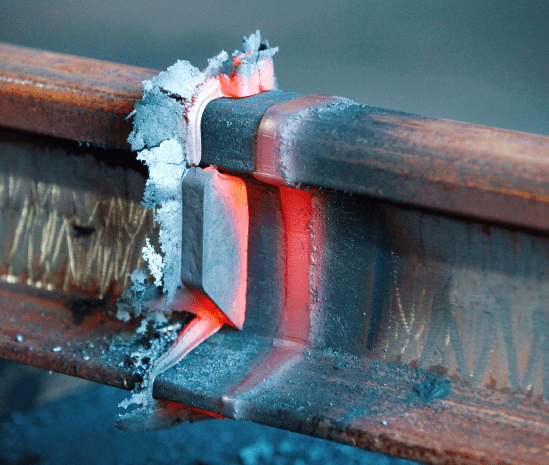Welding WPS: Usual Mistakes to Prevent and Just How to Correct Them
Welding WPS: Usual Mistakes to Prevent and Just How to Correct Them
Blog Article
The Ultimate Guide to Welding WPS Procedures: A Thorough Introduction for Welders
In the complex world of welding, Welding Treatment Requirements (WPS) offer as the backbone of guaranteeing top quality, uniformity, and security in welding operations (welding WPS). As we dig into the various components of a WPS and explore the ins and outs of certification and accreditation, we will certainly reveal the crucial function these procedures play in the world of welding.
Significance of WPS Procedures
Comprehending the importance of Welding Procedure Requirements (WPS) treatments is vital for making sure the quality and stability of bonded frameworks. WPS procedures act as a roadmap for welders, detailing the necessary actions, specifications, and materials needed to achieve a sound weld. By sticking to WPS standards, welders can make sure consistency in their job, leading to structurally sound and reputable welds.
Among the primary reasons that WPS procedures are essential is their function in maintaining weld quality and honesty. Complying with the defined welding parameters and strategies described in the WPS assists prevent defects such as porosity, fracturing, or incomplete fusion, which can jeopardize the toughness and resilience of the weld. Additionally, WPS procedures are essential for ensuring compliance with sector criteria and codes. By complying with well-known WPS standards, welders can show that their work fulfills the needed demands for safety and high quality, supplying assurance to clients, inspectors, and governing bodies. Basically, the importance of WPS treatments can not be overstated, as they are basic to achieving consistent, top quality welds that fulfill industry standards and requirements.

Elements of a WPS
A Welding Procedure Specification (WPS) generally consists of essential components that information the certain needs for performing a weld, guaranteeing uniformity and top quality in the welding process. The vital elements of a WPS consist of necessary variables such as base steels, filler metals, preheat and interpass temperature levels, welding procedures, protecting gases, welding placements, and post-weld heat treatment requirements.
Base metals refer to the products being signed up with, while filler metals are used to fill the gap between the base steels throughout welding. The welding process outlines the details technique to be used, whether it's gas metal arc welding (GMAW), secured metal arc welding (SMAW), or an additional approach. Welding placements define the positionings in which welding can be carried out.

Certification and Certification
Having developed the important components of a Welding Treatment Requirements (WPS), the focus currently changes in the direction of the important aspects of qualification and accreditation in welding methods.

Certification, on the other hand, is the formal acknowledgment of a welder's credentials by an appropriate qualification body or company. Welding accreditations are typically based on the certain welding procedures, materials, and positions a welder is qualified to collaborate with. Holding a legitimate welding qualification shows that a welder meets market requirements and is experienced to carry out welding tasks to the called for requirements.
Producing a WPS
To establish a Welding Treatment Specification (WPS) that meets market standards, cautious factor to check my source consider of welding processes, materials, and operational parameters is crucial (welding WPS). The initial step in producing a WPS is to determine the welding procedure to be used, such as gas steel arc welding (GMAW) or protected metal arc welding (SMAW) Once the welding process is established, the next critical facet is choosing the appropriate materials, taking into consideration variables like base metal type, density, and joint design. Functional parameters such as welding present, voltage, travel speed, and protecting gas make-up must additionally be meticulously specified in the WPS.

Executing and Keeping An Eye On WPS
Upon completing the thorough Welding Treatment Requirements (WPS) that meticulously details welding procedures, products, operational parameters, and high quality assurance procedures, the focus moves to properly implementing and checking the recognized procedures. Execution entails ensuring that all welders associated with the job are acquainted with the WPS and follow it carefully during the welding process. This needs providing sufficient training and supervision to assure adherence to the defined procedures. Monitoring the WPS entails constant oversight to confirm that welding activities align with the documented requirements. Examinations, testing, and quality assurance procedures are important parts of the surveillance process to recognize any discrepancies or issues promptly. Normal audits and reviews of the welding treatments assist in preserving consistency and high quality throughout the task. Reliable execution and tracking of the WPS are vital for making certain the stability, toughness, and safety and security of the welded joints, ultimately adding to the total success of the welding project.
Conclusion
To conclude, understanding and following Welding Treatment Specifications (WPS) is vital for welders to make sure quality, uniformity, and safety and security in their work. By knowing the elements of a WPS, acquiring proper qualifications and qualifications, creating comprehensive treatments, and applying and checking them properly, welders can enhance their abilities and effectiveness in welding practices. Sticking to WPS procedures is important for creating premium welds and meeting industry requirements.
In the detailed world of welding, Welding Treatment Requirements (WPS) offer as the backbone of guaranteeing quality, consistency, and safety and security in welding procedures. The welding process describes the particular technique to be utilized, whether it's gas metal arc welding (GMAW), secured steel arc welding (SMAW), or an additional approach.To establish a Welding Treatment Specification (WPS) that satisfies industry criteria, mindful factor to consider of welding processes, materials, and functional criteria is necessary. The first step in creating a WPS is to recognize the welding procedure to be used, such as gas metal arc welding (GMAW) or secured my website metal arc welding (SMAW)Upon completing the thorough Welding Treatment Spec (WPS) that thoroughly details welding procedures, materials, operational specifications, and top quality guarantee measures, the focus shifts to efficiently executing and monitoring the well-known procedures.
Report this page